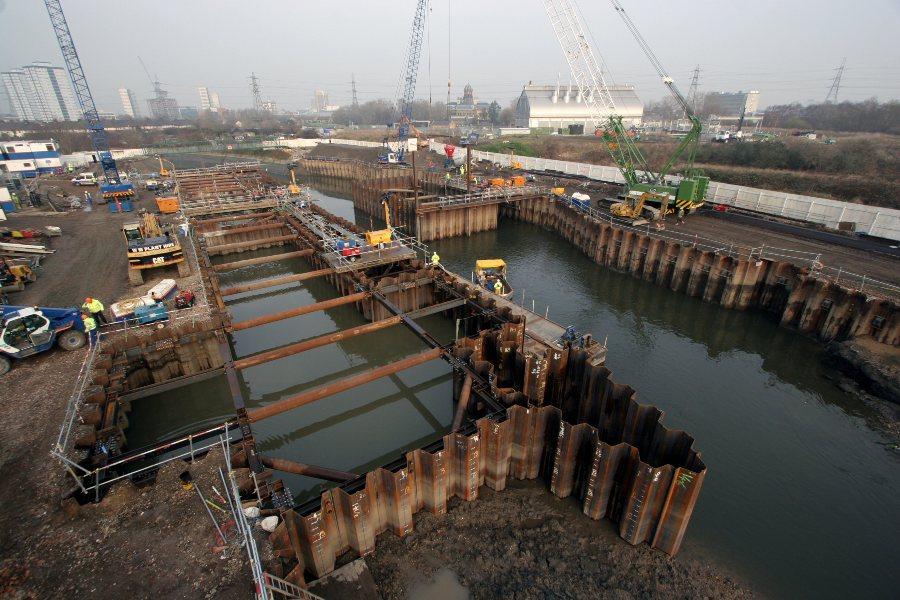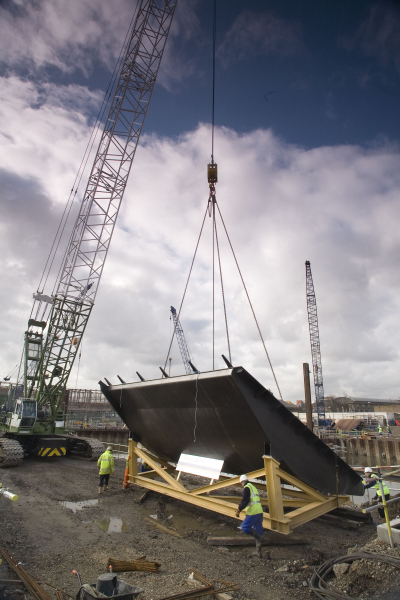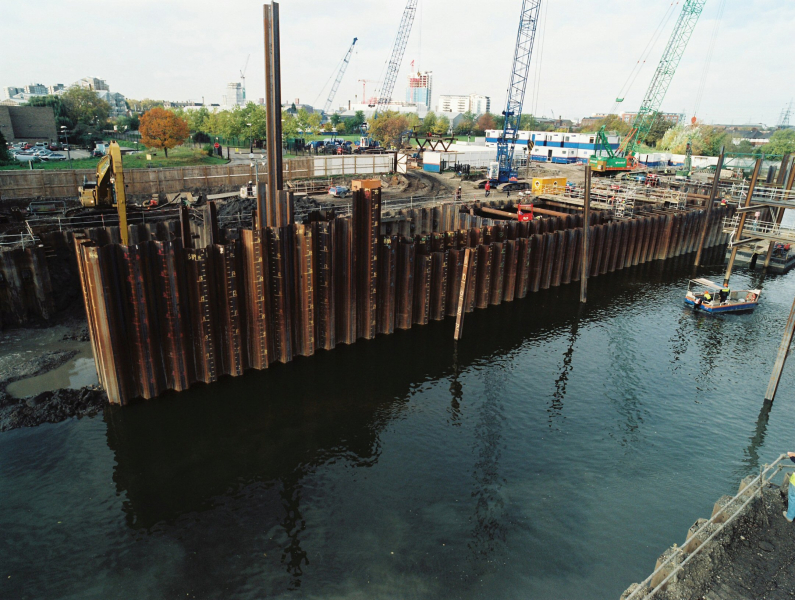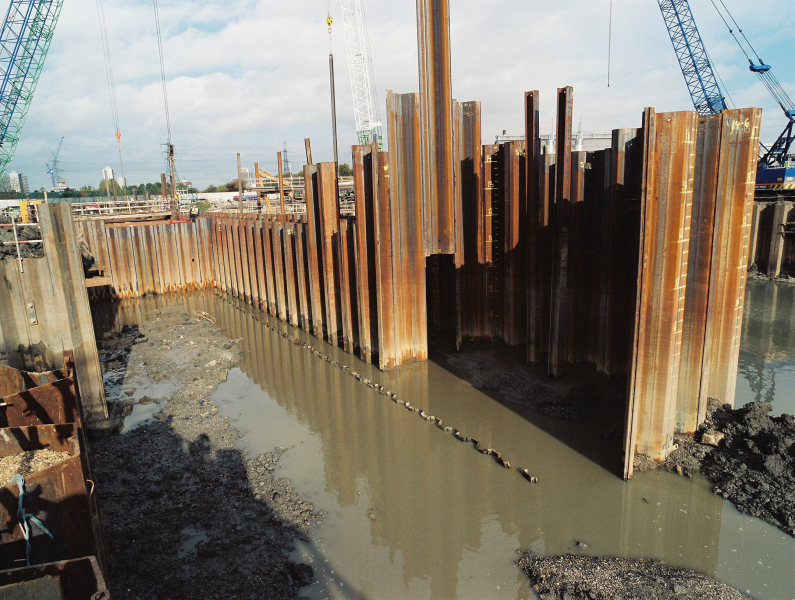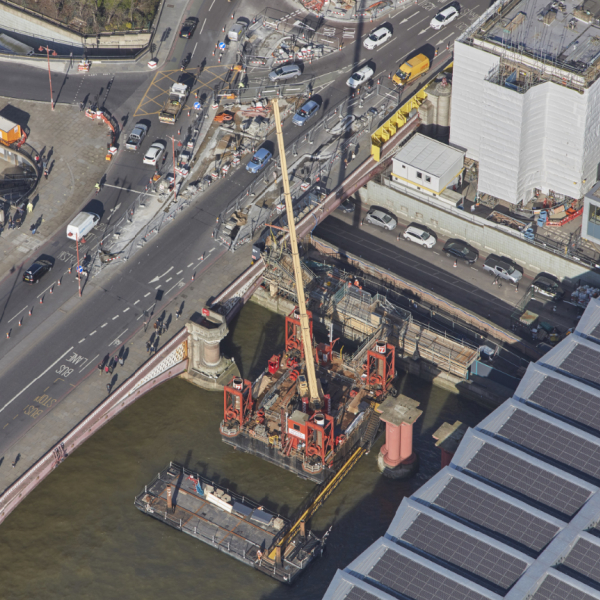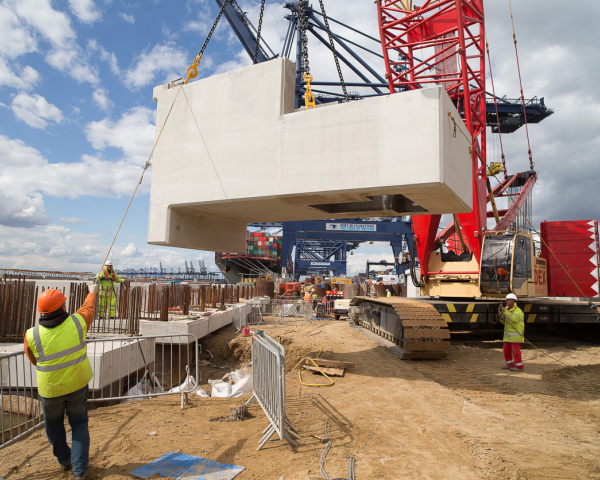Prescott Channel
In March 2007, VolkerStevin Ltd commenced works for British Waterways on the design and construction of the £24M Prescott Lock and associated water control structures.
The project aim was to impound the water level in the river channels running through the new London Olympic Park. This not only afforded control over tidal variations but also offered the sustainable option to transport the bulk of the construction materials to the site by barge.
VolkerStevin's work included the construction of control structures at two locations. The first at Prescott Channel involved the construction of a new 62m x 8m barge lock and two adjustable weir structures, incorporating ‘fish belly' gates. This lock is able to accommodate two 350 tonne river barges.
The second site at the adjacent and historic Three Mills site, involved the construction of three fixed weir gates. These impound the water level within the river and permit discharge of excessive river flows on low tide if necessary, so improving flood management in the area. We were responsible for the installation of Cathodic Protection to the gates.
Environmental enhancements included developing and installing in conjunction with the Environment Agency fish passes within the structures.
The lock will revert to leisure use on completion of the Olympics Games and help encourage the reinstatement of this previously neglected part of London's waterways. This should kick-start regeneration in the area for housing, leisure and commercial use.
Since its completion 350 tonne river barges have been able to navigate these waterways to transport bulk materials to the Olympic Park site and remove construction waste and excavated material. The Olympic Delivery Authority (ODA) set the target for the 2012 Olympics being the first ever ‘Sustainable Games' and published a Sustainability Strategy that aspired to import at least 50% by weight of construction materials by sustainable means. Prescott Channel is contributing to this goal by making the London Olympics as sustainable as possible, saving excessive lorry movements and reducing traffic congestion and CO2 emissions generated by the project.
VolkerStevin was responsible for the detailed design of the works and employed Tony Gee & Partners to carry out the structural design. TGP in turn employed a team of mechanical and electrical engineers and architects.
The first concrete was poured within the newly formed lock chamber in November 2007 marking the milestone of moving from channel widening works to construction of the fixed structures.
VolkerStevin employed a full time environmental engineer to test and classify for use or removal the contaminated soils and to verify compliance with the specification wherever used.
Another challenge included the need to amend the connection details between the existing channel and new construction owing to repairs that were made to the channel in the years since the original construction. The British Canals Historic society assisted VolkerStevin in identifying these repairs.
Another challenge involved dealing with a 2t unexploded world war two bomb that was discovered within the excavation works for the scheme. We liaised with the Bomb disposal squad who carried out a controlled detonation close to both the temporary and permanent works structures.
The introduction of CFA piling techniques, then faced with sheet piles was an unusual method to provide the channel wall at the northwest connection area. The design for CFA piles, more commonly used for foundation support than for retaining walls, was developed between VolkerStevin and their designer, Tony Gee & Partners to prevent the adjacent large diameter Thames Water sewer from being affected by the works.
